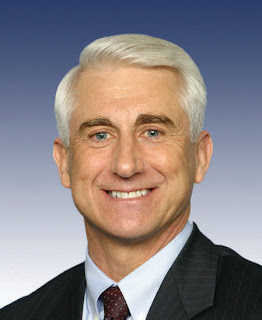Background:
Today Rep. Burton introduced legislation which repeals the Patient Protection and Affordable Care Act (commonly called Obamacare) in favor of health care reforms based on four central pillars:
Pillar #1: Access to Coverage for All Americans
• Makes the purchase of health care financially feasible for all – Extends the income tax deduction (above the line) on health care premiums to those who purchase coverage in the non-group / individual market. And, there is an advanceable, refundable tax credit (on a sliding scale) for low-income individuals to purchase coverage in the non-group / individual market.
• Covers pre-existing conditions – Grants states incentives to establish high-risk / reinsurance pools. Federal block grants for qualified pools are expanded.
• Protects employer-sponsored insurance – Individuals can be automatically enrolled in an employer-sponsored plan. Small businesses are given tax incentives for adoption of auto-enrollment.
• Shines sunlight on health plans – Establishes health plan and provider portals in each state, and these portals act to supply greater information, rather than acting as a purchasing mechanism.
Pillar #2: Coverage Is Truly Owned by the Patient
• Grants greater choice and portability – Gives patients the power to own and control their own health care coverage by allowing for a defined contribution in employer-sponsored plans. This also gives employers more flexibility in the benefits offered.
• Expands the individual market – Creates pooling mechanisms, such as association health plans and individual membership accounts. Individuals are also allowed to shop for health insurance across state lines.
• Reforms the safety net – Medicaid and SCHIP beneficiaries are given the option of a voucher to purchase private insurance. And states must cover 90% of those below 200% of the federal poverty level before they can expand eligibility levels under Medicaid and SCHIP.
Pillar #3: Improving the Health Care Delivery Structure
• Institutes doctor-led quality measures – Nothing suggested by the Council for Comparative Effectiveness Research can be finalized unless done in consultation with and approved by medical specialty societies. It also establishes performance-based quality measures endorsed by the Physician Consortium for Performance Improvement (PCPI) and physician specialty organizations.
• Reimburses physicians to ensure continuity of care – Rebases the Sustainable Growth Rate (SGR) (“doctor fix”) and establishes two separate conversion factors (baskets) for primary care and all other services.
• Promotes healthier lifestyles – Allows for employers to offer discounts for healthy habits through wellness and prevention programs.
Pillar #4: Reining in Out-of-Control Costs
• Reforms the medical liability system – Establishes administrative health care tribunals, also known as health courts, in each state, and adds affirmative defense through provider-established best practice measures. It also encourages the speedy resolution of claims and caps non-economic damages.
• Pays for the plan – The cost of the plan is completely offset through decreasing defensive medicine, savings from health care efficiencies (reducing Disproportionate Share Hospital payments – but only if the number of uninsured Americans goes down), ferreting out waste, fraud, and abuse, plus an annual one-percent non-defense discretionary spending step down. ###
TEXT CREDIT: Dan Burton - Indiana 5th District FOR IMMEDIATE RELEASE January 5, 2011 CONTACT: Joshua Gillespie (317) 848-0201 Washington, DC 2308 Rayburn House Office Building Washington, DC 20515-0001 (202) 225-2276
IMAGE CREDIT: This United States Congress image is in the public domain. This may be because it is an official Congressional portrait, because it was taken by an official employee of the Congress, or because it has been released into the public domain and posted on the official websites of a member of Congress. As a work of the U.S. federal government, the image is in the public domain.










